| |||||
| Decades: | |||||
|---|---|---|---|---|---|
| See also: | Other events of 1634 History of France • Timeline • Years | ||||
Events from the year 1634 in France .
| |||||
| Decades: | |||||
|---|---|---|---|---|---|
| See also: | Other events of 1634 History of France • Timeline • Years | ||||
Events from the year 1634 in France .


Louis XIII was King of France from 1610 until his death in 1643 and King of Navarre from 1610 to 1620, when the crown of Navarre was merged with the French crown.

Armand Jean du Plessis, 1st Duke of Richelieu, known as Cardinal Richelieu, was a French statesman and clergyman. He became known as l'Éminence rouge, or "the Red Eminence", a term derived from the title "Eminence" applied to cardinals and from the red robes that they customarily wear.
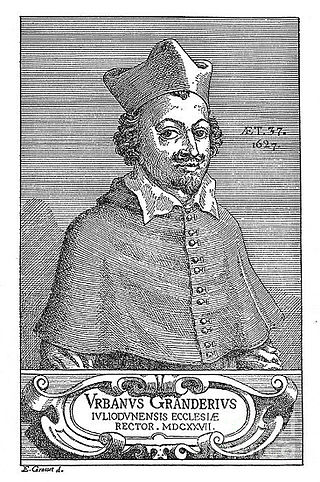
Urbain Grandier was a French Catholic priest who was burned at the stake after being convicted of witchcraft, following the events of the so-called "Loudun possessions". Most modern commentators have concluded that Grandier was the victim of a politically motivated persecution led by the powerful Cardinal Richelieu.
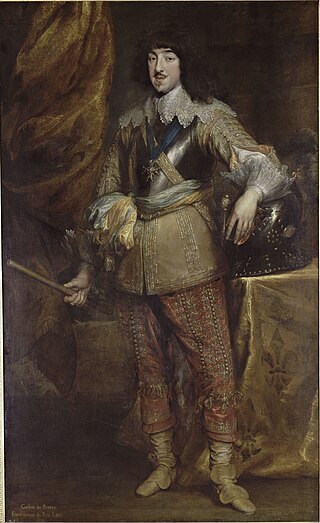
MonsieurGaston, Duke of Orléans, was the third son of King Henry IV of France and his second wife, Marie de' Medici. As a son of the king, he was born a Fils de France. He later acquired the title Duke of Orléans, by which he was generally known during his adulthood. As the eldest surviving brother of King Louis XIII, he was known at court by the traditional honorific Monsieur.
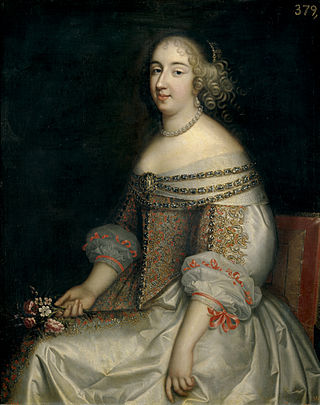
Anne Marie Louise d'Orléans, Duchess of Montpensier, known as La Grande Mademoiselle, was the only daughter of Gaston d'Orléans with his first wife, Marie de Bourbon, Duchess of Montpensier. One of the greatest heiresses in history, she died unmarried and childless, leaving her vast fortune to her cousin Philippe I, Duke of Orléans. After a string of proposals from various members of European ruling families, including Charles II of England, Afonso VI of Portugal, and Charles Emmanuel II of Savoy, she eventually fell in love with the courtier Antoine Nompar de Caumont and scandalised the court of France when she asked Louis XIV for permission to marry him, as such a union was viewed as a mésalliance. She is best remembered for her role in the Fronde and her role in bringing the famous composer Jean-Baptiste Lully to the king's court, and her Mémoires.

Abel Servien, marquis de Sablé et de Boisdauphin and Comte de La Roche des Aubiers was a French diplomat who served Cardinal Mazarin and signed for the French the Treaty of Westphalia. He was an early member of the noblesse de robe in the service of the French state.

Charles IV was Duke of Lorraine from 1624 until his death in 1675, with a brief interruption in 1634, when he abdicated under French pressure in favor of his younger brother, Nicholas Francis.

During the Middle Ages, the counts of Blois were among the most powerful vassals of the King of France.
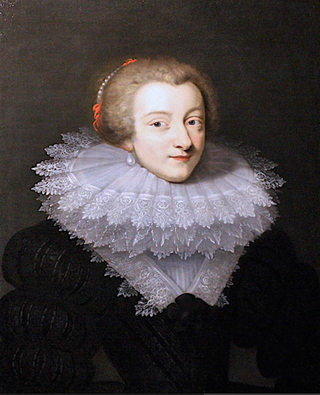
Marie Aimée de Rohan was a French courtier and political activist, famed for being the center of many of the intrigues of the first half of the 17th century in France. In various sources, she is often known simply as Madame de Chevreuse.
Claude de Bourdeille, comte de Montrésor (c. 1606–1663) was a French aristocrat and Count of Montrésor, who played a role in the intrigues of the first half of the 17th century, and was also a memoir-writer.

The Loudun possessions, also known as the Loudun possessed affair, was a notorious witchcraft trial that took place in Loudun, Kingdom of France, in 1634. A convent of Ursuline nuns said they had been visited and possessed by demons. Following an investigation by the Catholic Church, a local priest named Urbain Grandier was accused of summoning the evil spirits. He was eventually convicted of the crimes of sorcery and burned at the stake.

The rue Saint-Honoré is a street in the 1st arrondissement of Paris, France.
Jean-Joseph Surin was a French Jesuit mystic, preacher, devotional writer and exorcist. He is remembered for his participation in the exorcisms of Loudun in 1634-37.

The Battle of La Marfée, also known as the Battle of Sedan, took place on 6 July 1641, during the 1635 to 1659 Franco-Spanish War, a related conflict of the Thirty Years War.

Claude de Mesmes, comte d'Avaux (1595–1650) was a 17th-century French diplomat and public administrator. He was sent in various missions to Venice, Rome, Germany, Sweden, Denmark, and Poland by Richelieu.
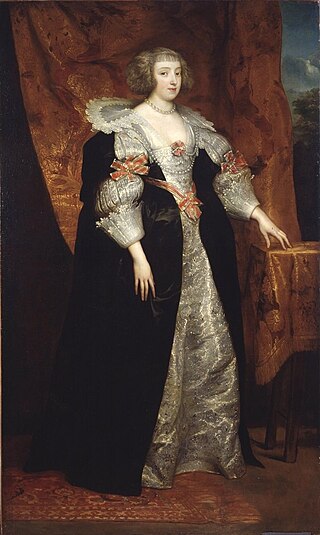
Marguerite of Lorraine, Duchess of Orléans, was the wife of Gaston, younger brother of Louis XIII of France. As Gaston had married her in secret in defiance of the King, Louis had their marriage nullified when it became known. On his deathbed, Louis permitted them to marry. After their remarriage, Marguerite and Gaston had five children. She was the stepmother of La Grande Mademoiselle.
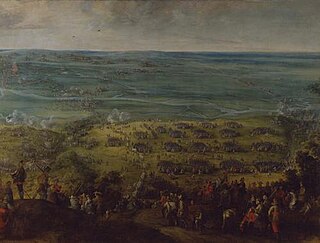
The Crossing of the Somme took place on 5 August 1636 during the Thirty Years' War and the Franco-Spanish War when units of the Spanish Army of Flanders and the Imperial Army under Thomas Francis, Prince of Carignano, lieutenant of the Cardinal-Infante Ferdinand of Austria, crossed the Somme river near Bray-sur-Somme during its offensive in French territory. Despite the fierce resistance of the French army led by Louis de Bourbon, Count of Soissons, the allied troops successfully crossed the river and drove off the French troops along the Oise river, proceeding over the following weeks to invest the important fortress of Corbie, located two leagues upriver of Amiens, which caused a spread of panic among the population of Paris.

Jeanne des Anges, also known as Jeanne de Belcier, was a French Ursuline nun in Loudun, France. She became mother superior of the convent at a young age, but is chiefly remembered as a central figure in the case of the possessed of Loudun in 1632, which led, after witch trials, to the burning at the stake of the priest Urbain Grandier two years later.
Events from the year 1631 in France
Events from the year 1633 in France.